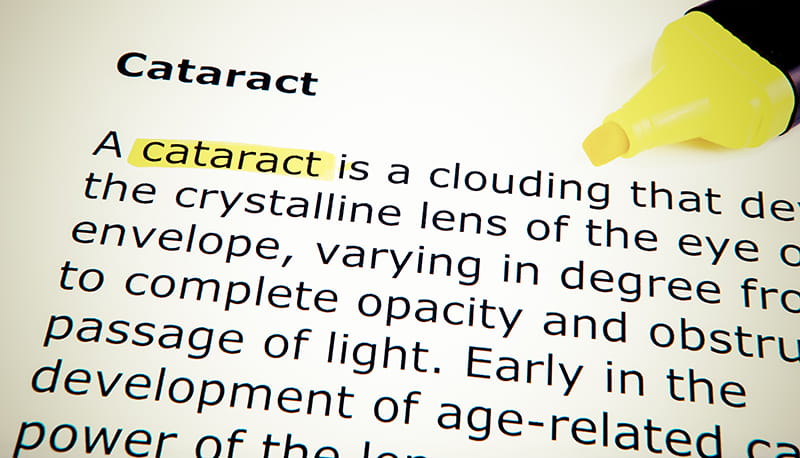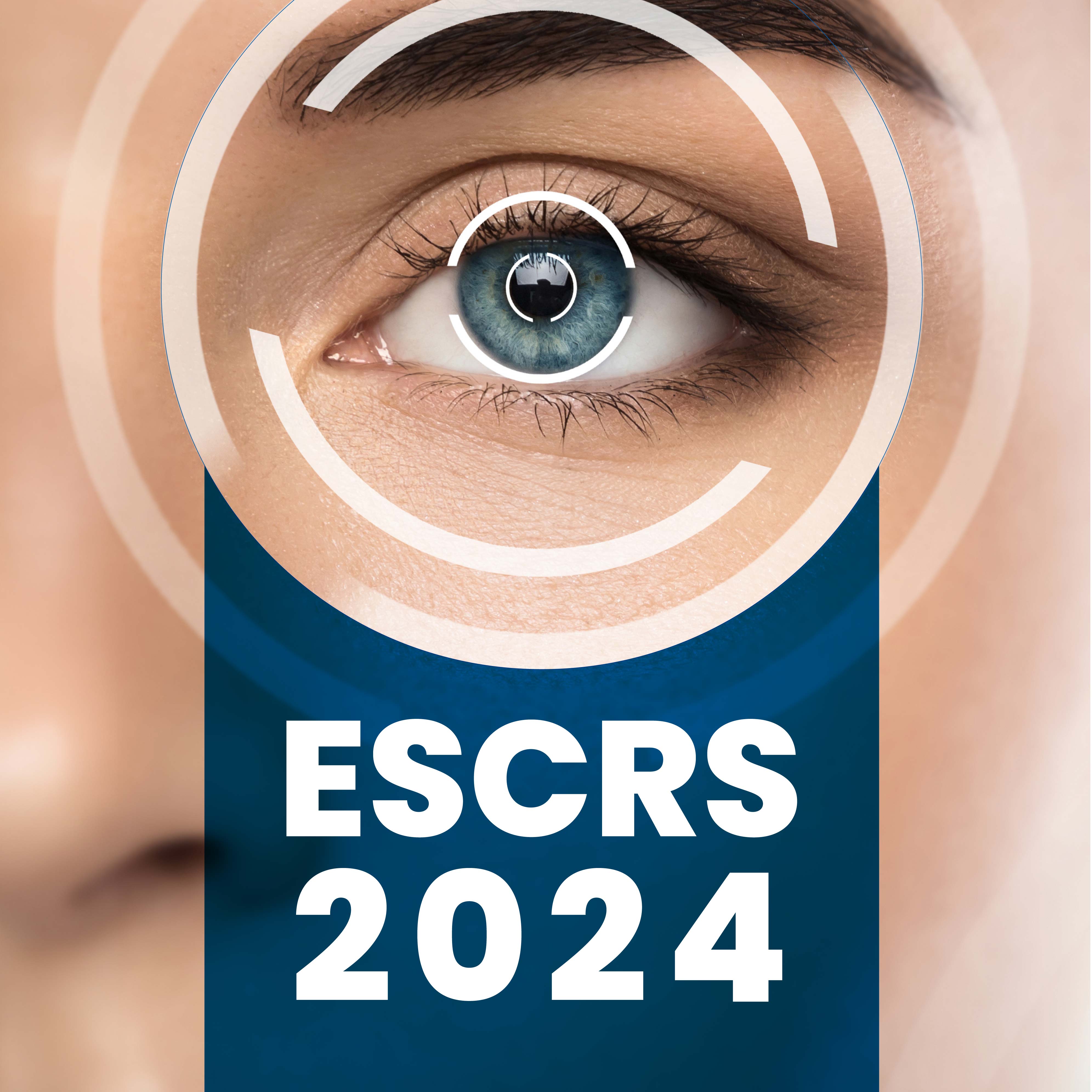ESCRS 2024: Imaging of the Human Eye: Ocular Ultrasonography
Speaker - Luc Van Os
In ophthalmology, acoustical imaging was essential for visualizing and measuring eye structures, especially those inaccessible by optical methods. While optical imaging had limitations due to the inability of some tissues to transmit light, these same tissues could transmit sound waves, enabling deeper or obscured areas to be imaged. The process relied on acoustical pulses generated by a probe, which traveled through tissues and produced echoes when encountering different densities. The probe detected these echoes, and variations in tissue density caused distinct changes in echo amplitude. The transducer emitted pulses and awaited returning echoes, allowing for real-time imaging independent of optical transparency. Different frequencies were used based on the desired depth and resolution. Lower frequencies (10–20 megahertz, MHz) penetrated the eye and orbit deeper, while higher frequencies (35–50 MHz) offered higher resolution for anterior structures. The balance between depth and resolution allowed axial (depth-based) and lateral (side-by-side) resolution. Acoustical imaging was versatile and used across various patients and species, such as in studies on sea turtles. The equipment was mobile, making it accessible in many settings.
The Amplitude Scan (A-scan) technique was one key application in ophthalmology, particularly cataract surgery. It involved transmitting a single ultrasound wave to measure the axial lengths of ocular structures. Each tissue had a unique ultrasound transmission speed, critical for accurate measurements. Dense cataracts or eyes filled with silicone oil could affect these speeds and lead to measurement errors. The Brightness Scan (B-scan) was developed a decade after the A-scan, and a pivoting transducer was used to create a sweep of A-scans. Each pixel in the image represented the amplitude of the reflected signal, with brighter dots indicating stronger signals. The B-scan was particularly useful for anatomical studies and axial length measurements in difficult cases like staphyloma. In these cases, an immersion technique was recommended for clearer corneal visualization. For B-scan imaging, lower frequencies (10 MHz) penetrated deeper into the orbit for orbital examinations and visualized low-density structures like vitreous floaters. Higher frequencies (20 MHz) provided better resolution but were limited to the anterior orbit. In conclusion, acoustical imaging was a flexible and reliable method for visualizing ocular structures inaccessible through optical means, with significant applications in clinical settings. Ultrasound played a vital role in advancing ophthalmic imaging and diagnostics.
B-scan ultrasound can be performed in different orientations for optimal imaging. Transverse sections involve placing the probe parallel to the limbus, while longitudinal sections position the probe perpendicular to the limbus, with the marker directed toward the limbus. The peripheral retina appears superiorly on the ultrasound screen, and the posterior retina appears inferiorly. Longitudinal scans are useful for identifying retinal tears. Axial scans, where the probe is placed on the cornea, can be done horizontally or vertically, but the image quality may diminish due to sound traveling through the lens. Transverse and longitudinal sections bypass the lens and typically provide better image clarity. Additionally, adjusting the gain settings can enhance the visibility of structures like the vitreous and floaters. Ultrasound biomicroscopy (UBM), introduced in the 1990s, utilizes higher frequencies to image the anterior segment, including the angle, ciliary body, and lens. The technique requires immersion, using either a scleral shell or a water-filled pocket, with the patient in a supine position and under topical anesthesia. Both axial and longitudinal scans are possible, offering a general overview or detailed imaging of specific areas, such as the angle.
Plane-wave ultrasound is another advanced technique where unfocused sound waves are transmitted into the eye and analyzed to assess vascularization. The method avoids the risks associated with true Doppler imaging, which requires a high amount of ultrasound energy that could potentially damage the eye. Therefore, Doppler is not commonly used in ophthalmology at present. Ultrasound has multiple key applications in cases where visibility is compromised, such as when the cornea, lens, or vitreous is unclear. It is also useful for patients who have undergone surgery, as it helps assess eye structures, particularly the posterior segment. Unlike UBM, which requires patient cooperation, standard ultrasound is more adaptable. It's frequently employed to evaluate and monitor intraocular masses, allowing for repeated measurements and assessments of lesion reflectivity, which can provide insights into the pathology. Ultrasound is also valuable for axial length measurements and biometry, especially for structures that are difficult to observe due to non-transparent eye parts or specific locations like the angle. For instance, in cases of white cataracts, ultrasound is used to ensure there is no hidden tumor or persistent fetal vasculature (PFV) behind the cataract. Anterior ultrasound or UBM can offer insights into the lens's thickness and position relative to surrounding structures.
In cases of chronic uveitis, performing a UBM beforehand can be crucial to assess the condition of the ciliary body. If the ciliary body is abnormally thin, there may be a risk of developing hypotony after surgery. Its precautionary measure can help guide surgical decisions and minimize complications. For example, there was a case involving a woman who underwent cataract surgery and later returned with what was initially suspected to be endophthalmitis. Upon further examination, it was revealed to be acute retinal necrosis. In another instance, two patients with anterior segment dysgenesis presented with low corneal visibility. Despite similar pathology, UBM revealed different underlying conditions. One case showed an entire lens touch behind the opaque cornea, indicating a poor prognosis for the child. In the second case, UBM revealed a single iris strand attached to the endothelium, which allowed for a selective intervention. After cutting the iris strand, the corneal opacity improved slightly.
In another case, a patient with choroidal hemorrhage after an Intraocular Lens (IOL) exchange experienced significant pain, but ultrasound allowed for both diagnosis and follow-up, tracking the resolution of the hemorrhage over time. Ultrasound is also valuable for identifying intraocular masses, such as choroidal metastasis or melanoma. By overlaying an A scan onto a B scan image, the reflectivity of lesions and related conditions, like serous detachments, can be evaluated. Intraocular tumors in the anterior segment, such as iris nevi, can be monitored with UBM to assess growth. For axial length measurements, contact methods are easier but risk shortening the measurement due to pressure on the cornea, while immersion techniques offer more accurate results without corneal distortion. Optical measurements are increasingly common, but ultrasound remains a reliable alternative in dense cataracts or uncooperative patients. It's crucial to remember that ultrasound and optical measurements differ, as ultrasound measures up to the internal limiting membrane, while optical methods measure to the pigment epithelium. Ultrasound is also effective for assessing non-visible structures, such as the angle in uveitis-induced angle closure or post-trauma angle recession cases. In one case, a patient who had cataract surgery as a baby presented with a mass behind the iris. UBM revealed that the mass was simply lens matter re-proliferation, with no urgent intervention required. The technique can also visualize the ciliary processes and body, aiding diagnosis and management.
Ultrasound is also valuable for diagnosing and managing exudates in severe human leukocyte antigen B27 anterior uveitis, as demonstrated by a patient with a thick exudate behind the lens. UBM allowed visualization of the ciliary body and zonular fibers, which can be informative in such cases. Additionally, UBM is useful for identifying IOL malposition. For example, in a patient with hypertension, uveitis, or hemorrhages, UBM revealed that the haptic of a one-piece IOL was in the sulcus, causing friction on the backside of the iris due to reproliferation under the capsule. In cases of scleritis, ultrasound is indispensable. The characteristic T-sign can be identified, as well as orbital tumors, using a 10-megahertz probe.
Ultrasound imaging in ophthalmology has several limitations. First, it is a contact technique requiring coupling fluid: gel for B-scans and water for UBM. An immersion B-scan can improve imaging quality, particularly of the cornea, but overall image quality is generally lower than optical techniques. Additionally, there are constraints on the amount of ultrasound energy that can be used, as excessive energy could damage tissues, similar to how ultrasound is used in surgical procedures like phacoemulsification or cyclodestruction. When the eye is filled with gas, ultrasound imaging is challenging, although some imaging might be possible with partial filling or careful positioning. For eyes filled with silicone oil, adjusting the ultrasound speed settings to match the type of silicone oil used and considering the tamponade agent is crucial.
Comparing anterior segment Optical Coherence Tomography (OCT) and UBM. UBM utilizes acoustic waves and requires coupling fluids. It's not dependent on optical clarity, making it useful when transparency is poor. UBM can be challenging to perform, requiring more expertise and time, and generally offers lower resolution than OCT, whereas Anterior Segment OCT is contactless and provides higher-resolution images. It's easier to perform but relies on optical clarity, which can be problematic in cases of significant opacity. For instance, in a patient with JIA and cataracts, OCT only reveals the iris and opacity, whereas UBM clearly shows the lens and ciliary body. In summary, while anterior segment OCT is easier and provides higher resolution, UBM is crucial when optical clarity is compromised. Different media, such as silicone oil, need adjustments, and ultrasound remains essential when light-based methods are insufficient.
42nd Congress of the European Society of Cataract and Refractive Surgeons, 6 – 10 September 2024, Fira de Barcelona, Spain.



